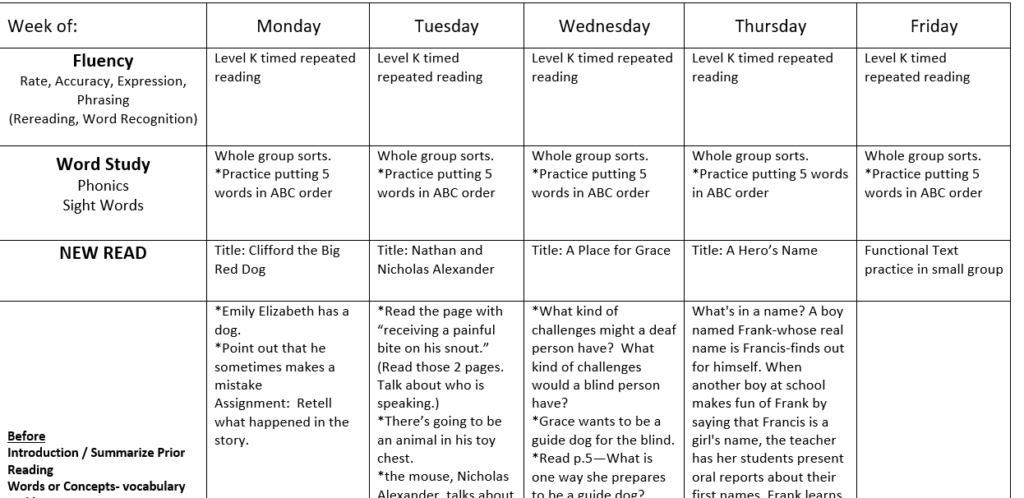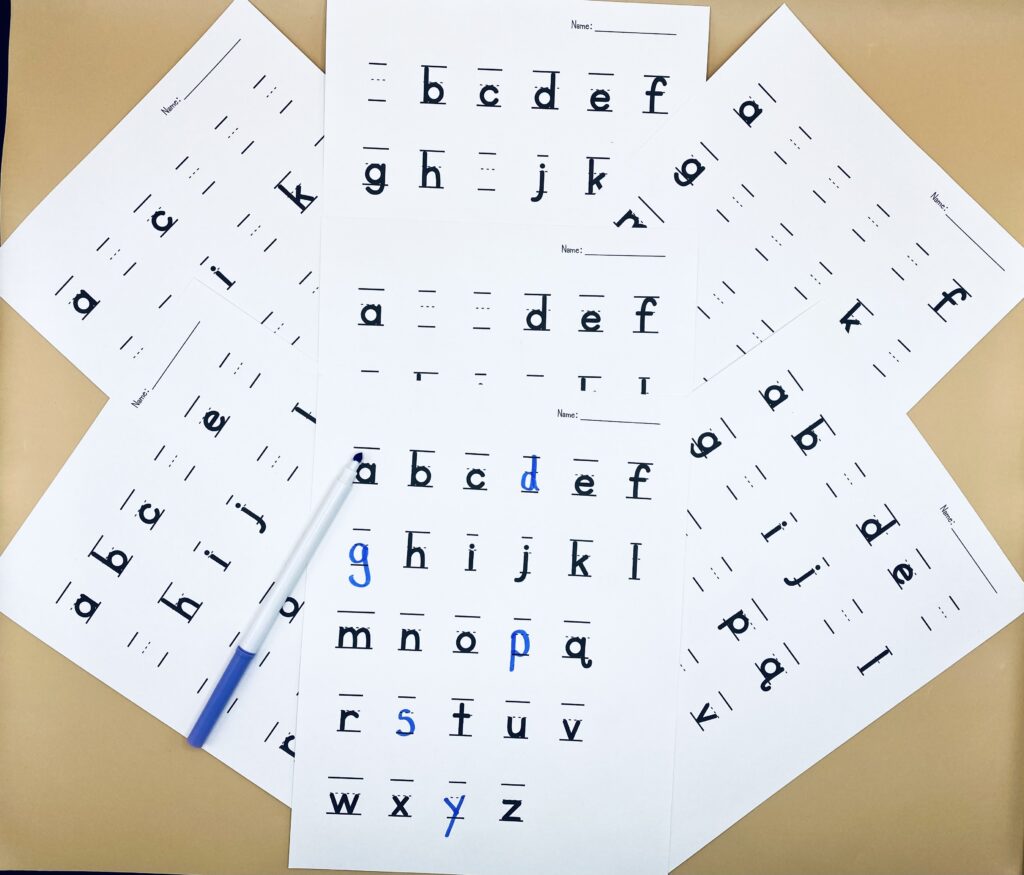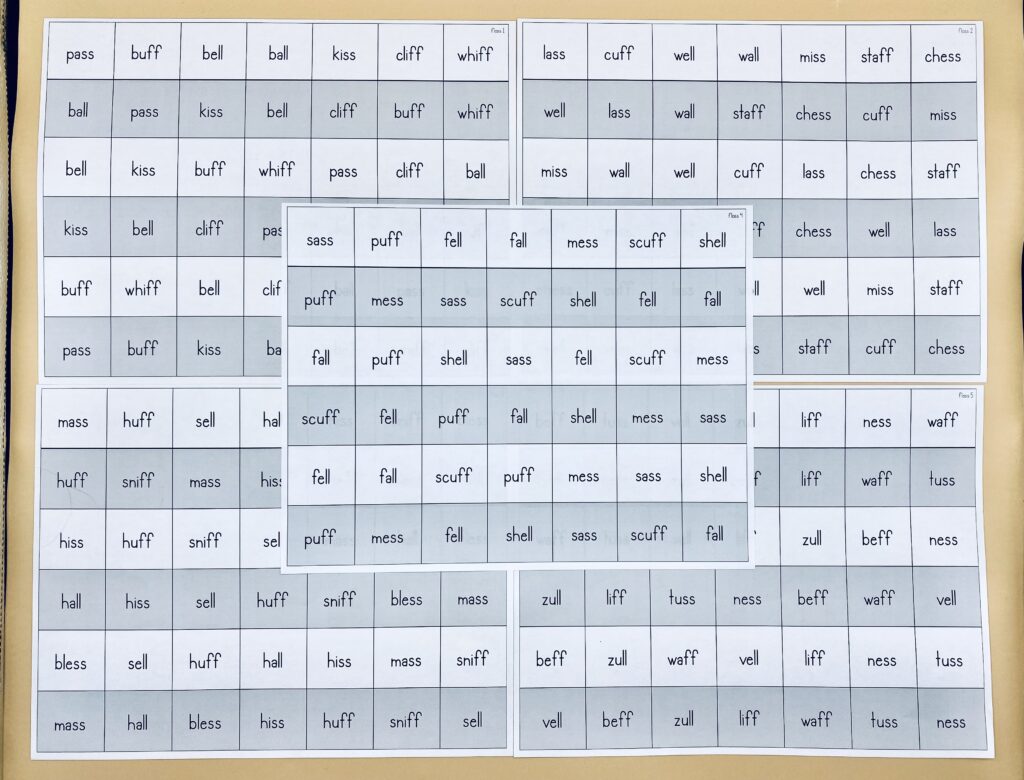
Share This:
I loved guided reading. Without a doubt, the favorite part of my day as a classroom teacher was pulling children to my guided reading table. We were reading BOOKS, we were talking about books, we were LOVING books. Sounds great, right? But there was one thing missing: as much as we were “reading” books, talking about books, and loving books, my children weren’t acquiring skills that actually helped them to read books independently.
Over the past several decades, guided reading has become synonymous with the authors Irene Fountas and Gay Su Pinnell. On their website, they define guided reading in the following way: “Guided reading is a small-group instructional context in which a teacher supports each reader’s development of systems of strategic actions for processing new texts at increasingly challenging levels of difficulty. During guided reading, students in a small-group setting individually read a text that you have selected at their instructional reading level.” (Full citation below.)
When I read this definition, I can’t help but feel they are being intentionally vague and using scholarly language to fool us into thinking they must be right. What exactly is a “development of systems of strategic actions for processing new texts”? The cueing systems? They do not really clarify what this is. For me, the thing that really stands out from this definition is the multiple mention of leveled texts. At its core, guided reading is moving students through a series of leveled texts.
Let’s explore an additional definition for guided reading. Learning A-Z defines guided reading as “A small-group practice in which students read texts at their reading level, guided reading provides one way for teachers to support each reader’s development as they process texts that appropriately challenge them.”(Full citation below). Once again, the focus is on the text, and not necessarily student needs.
Guided reading, at its heart, is about moving children through text levels, almost like reading is a video game and “just one more level” is our goal. There may be phonics instruction, but phonics instruction is most often embedded and not systematical or sequential. There may be comprehension strategy work, or basic writing work, yet every component of guided reading takes the teacher and the students back to the leveled text they are reading.

For many teachers, guided reading is the only small group system we have known. I was taught, in both master’s programs, that we should group students according to guided reading levels, but to make sure the groups were fluid. Guided reading was supposed to be the answer for all students, helping struggling readers catch up and extending the work of more advanced readers. (Not-so-fun-fact, I had no idea how to make guided reading groups fluid when they weren’t jumping levels like I thought they would.)
The problem is that guided reading is flawed from the beginning. Guided reading levels are arbitrary, they are not normed, and they cannot be relied upon for accuracy. The role of background knowledge and vocabulary isn’t really considered. We know that children who have high background knowledge about a text will read and understand the text better than someone without background knowledge. So a level L text might be really easy for a child if it is a topic they are familiar with, but exceedingly difficult if it is a topic with which they have little knowledge.
Instead of guided reading, I suggest we utilize targeted small groups. My small groups are designed around needs in one of the following areas: phonemic awareness and letter sound knowledge, basic phonics knowledge, or background knowledge and vocabulary. Let’s explore each.
If a child does not yet know their letter names and sounds, that is where I start. I used to start my kindergarteners in a very orange kit (If you know, you know) where children were “reading” leveled texts from day one. I thought this “approximation” of reading was an important step in helping them learn to read. Now, I don’t feel a need to rush these students into books. Instead, we are working to build phonemic awareness and letter sound knowledge. It can take hundreds of exposures to a letter before children remember it effortlessly, so I work to up their exposure in as many ways as possible. Once we have some letters under our belt, I begin segmenting and blending CVC words with them (using the letters they know). You can read more about these groups in this blog post.

The majority of my groups are focused on basic phonics instruction. Interestingly enough, for the first time ever, I have several groups that will be transitioning away from these groups because they’ve acquired so much phonics knowledge This is not a personal brag: this is what structured literacy can do for all children. In my phonics groups, I loosely follow an Orton-Gillingham lesson. In these groups, I explicitly teach the sound-symbol correspondences and give children LOTS of time to read and spell. You can read more about these groups in this blog post.

The last of my targeted small groups revolves around background knowledge and vocabulary building. Much of my vocabulary building is through morphology instruction. Once children have control of most single-syllable words, it is okay to start putting them in traditional texts. I am still not leveling children, though. Instead, I am looking at our science and social studies texts to build background knowledge around content. Spending a few weeks at a time on a single topic helps to expand their knowledge (some of the topics we’ve explored this year are electricity, forms of energy, oceans, and Civil Rights). Like Natalie Wexler says, knowledge is like Velcro. It sticks to other knowledge. I don’t have a blog post specifically devoted to this, yet, but hoping it will come this year!
For me, the answer is no. I can’t trust guided reading levels, so I cannot see myself returning to them.
I tried to access Fountas and Pinnell’s “factors related to text difficulty chart,” but it required I signed up for their e-mail list, so I declined. Instead, I found a parent’s guided to guided reading on Scholastic’s website (citation below). They list the following factors as categories that determine a guided reading level: genre, text structure, content, themes and ideas, language and literary features, sentence complexity, vocabulary, words, illustrations, and book and print features.
It sounds great, but in practice it’s just not what our children need, especially our youngest learners. For children who are just learning to read, we can’t create predictable books, slap the level A on it and call it a day. We have to target our practice around their instructional needs—those skills we are teaching them.
I recently posted about guided reading on my Instagram. A few comments pointed out that it was just a term and that we shouldn’t get caught up in the terminology. In this case, however, I disagree. Guided reading has been associated with very specific practices steeped in leveled texts. If you teach guided reading groups, but you are not using leveled texts and are not following the steps, then you aren’t teaching guided reading. And that is a good thing.
I do think it is important that we think about the terms we are using. Some people will undoubtedly say “don’t throw the baby out with the bathwater” and that there are things about guided reading that can still be used. But nobody is throwing any babies, and I don’t have the energy to sort out large amounts of crummy instruction to find a single kernel of good instruction. It’s just not worth the energy when there is so much good knowledge out there.
Like everything else when you are making the transition from balanced to structured literacy, moving away from guided reading groups can be difficult. I am adamant, however, that this shift is needed. We MUST move away from merely leveling our children based on an arbitrary leveling system. Instead of letting the text lead the way, children’s needs should lead the way in small group. For some children, our small group instruction is the only form of intervention they will get: we owe it to them to ditch the practices that will not further them as readers.
“A Parent’s Guide to Guided Reading.” Scholastic, https://www.scholastic.com/parents/books-and-reading/reading-resources/book-selection-tips/parents-guide-to-guided-reading.html.
Team, Fountas and Pinnell. “What Is Guided Reading?” Fountas & Pinnell Literacy™ Blog, https://fpblog.fountasandpinnell.com/what-is-guided-reading.
“What Is Guided Reading? A Look at Guided Reading: Learning A.” Z, Learning A-Z, 16 Dec. 2019, https://www.learninga-z.com/site/resources/breakroom-blog/what-is-guided-reading.
Share This:

Savannah Campbell is a K-5 reading specialist. She has taught her entire 12-year teaching career at the school she went to as a child. She holds two master’s degrees in education from the College of William and Mary. Savannah is both Orton-Gillingham and LETRS trained. Her greatest hope in life is to allow all children to live the life they want by helping them to become literate individuals.

Savannah Campbell is a K-5 reading specialist. She has taught her entire 12-year teaching career at the school she went to as a child. She holds two master’s degrees in education from the College of William and Mary. Savannah is both Orton-Gillingham and LETRS trained. Her greatest hope in life is to allow all children to live the life they want by helping them to become literate individuals.
Feeling overwhelmed with all the terminology out there? Want to know the key terms all teachers need to teach phonics? In this FREE Rules of English cheat sheet, you get a 5 page pdf that takes you through the most important terms for understanding English—you’ll learn about digraphs, blends, syllable types, syllable divisions, and move. Grab today and take the stress out of your phonics prep!
